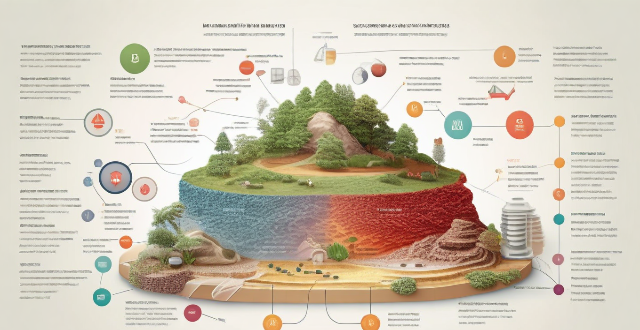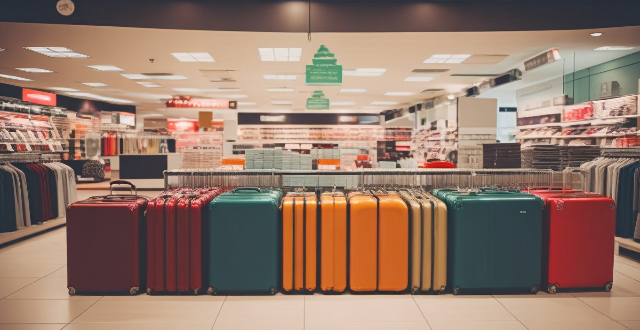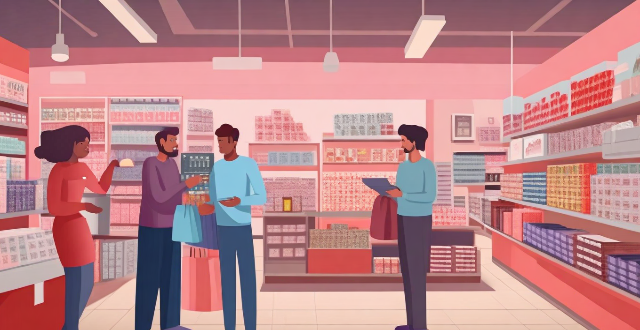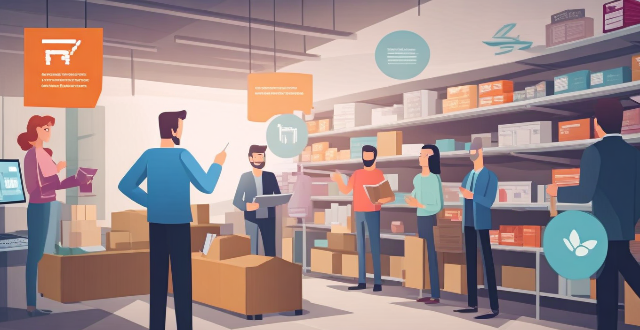Co2 Store

How much carbon dioxide can be sequestered through different methods ?
The amount of carbon dioxide that can be sequestered varies significantly depending on the method and site conditions. Different methods include geological storage, ocean storage, and terrestrial storage, each with different potentials and technical requirements for CO2 sequestration. Geological storage is one of the most promising methods for long-term storage of CO2. It involves injecting and storing CO2 deep underground, typically in saline formations, depleted oil and gas reservoirs, and unmineable coal seams. The potential for CO2 storage in these geological structures is influenced by various factors such as the size, depth, and permeability of the formations, as well as the existence of impermeable cap rock to contain the CO2. Deep saline formations are porous and permeable rocks filled with saltwater that can store CO2 in various forms such as free gas, dissolved in brine, or mineralized after reacting with the host rock. Depleted oil and gas reservoirs offer another option for CO2 storage. After hydrocarbon extraction, these fields have remaining pore space that can be used to inject and store CO2. Unlike saline formations, they often have pre-existing infrastructure for drilling and injection, which can reduce the cost of storage. Unmineable coal seams, also known as coal bed methane (CBM) reservoirs, can store CO2 through a process called enhanced coal bed methane recovery. In this process, injecting CO2 into coal seams displaces methane, which can be recovered as a energy source while sequestering the CO2. Ocean storage involves dissolving CO2 in seawater at great depths where it remains isolated from the atmosphere. This method relies on either natural processes like ocean upwellings or engineering techniques such as direct injection or pipeline delivery systems. While the exact storage capacity is difficult to estimate due to complex ocean dynamics, studies suggest that the global ocean could theoretically absorb thousands of gigatons of CO2. Terrestrial storage focuses on enhancing the natural processes by which ecosystems capture and store carbon. This includes reforestation, afforestation, and soil management practices that increase carbon stocks in vegetation and soils. The potential for terrestrial storage is significant but varies widely depending on factors like climate, soil type, and land use practices. Globally, it is estimated that forests alone could potentially sequester hundreds of gigatons of CO2 over several decades.

How long will it take for carbon sequestration to have a noticeable effect on atmospheric CO2 levels ?
Carbon sequestration is a process that aims to reduce atmospheric CO2 levels by capturing and storing carbon dioxide. The effectiveness of this process depends on various factors such as the rate of carbon sequestration, global emissions reduction efforts, and the health of natural carbon sinks. In the short term, it is unlikely that carbon sequestration alone will have a noticeable effect on atmospheric CO2 levels. However, in the medium to long term, if significant investments are made in scaling up carbon sequestration technologies and reducing global CO2 emissions, some noticeable effects may begin to emerge. These could include slower rates of CO2 accumulation, improved air quality, reduced global warming, and restoration of natural ecosystems. Therefore, sustained investments in carbon sequestration and other climate mitigation strategies can help achieve long-term reductions in atmospheric CO2 levels and mitigate the effects of climate change.

What are some of the most effective methods for carbon sequestration ?
Carbon sequestration refers to the process of capturing and storing carbon dioxide (CO2) from the atmosphere to mitigate its effects on climate change. There are several effective methods for carbon sequestration, including afforestation and reforestation, soil carbon sequestration, biochar production, ocean fertilization, and direct air capture (DAC). Afforestation and reforestation involve planting new trees or replacing existing ones in deforested areas, while soil carbon sequestration involves increasing the amount of organic matter in soil by adding compost, manure, or other organic materials. Biochar production involves creating a type of charcoal made from plant materials that is added to soil to improve its fertility and water-holding capacity. Ocean fertilization involves adding iron or other nutrients to the ocean to stimulate the growth of phytoplankton, which absorb CO2 through photosynthesis. Direct air capture involves using machines to capture CO2 directly from the atmosphere and then store it underground or in other long-term storage solutions.

What should I consider before buying luxury items in a duty-free store ?
When considering purchasing luxury items in a duty-free store, one should keep in mind their budget, the authenticity of the item, price comparison, return policy, warranty coverage, potential tax refunds for international travelers, and customs regulations.

What role does deforestation play in climate change ?
The Role of Deforestation in Climate Change Deforestation contributes to climate change by reducing the Earth's capacity to absorb CO2 and releasing stored carbon back into the atmosphere. This process exacerbates the greenhouse effect, leading to global warming. Key points include: - Loss of Carbon Sinks: Trees act as natural carbon sinks, capturing and storing CO2. When forests are destroyed, these carbon sinks are lost. - Release of Stored Carbon: Deforestation releases the carbon stored in trees back into the atmosphere, increasing atmospheric CO2 levels. - Biodiversity Loss: Forests are home to a vast array of species. Deforestation leads to habitat destruction and loss of biodiversity. - Soil Erosion and Degradation: Trees help maintain soil quality. Without trees, soil can become degraded, reducing its ability to store carbon. - Albedo Effect: Forests have a darker surface than bare ground, meaning they absorb more sunlight and heat. When forests are replaced with lighter-colored surfaces like grasslands or croplands, the albedo (reflectivity) of the land increases. - Feedback Loops: Deforestation can create feedback loops that exacerbate climate change. For example, as temperatures rise due to increased CO2 levels, it becomes harder for some forests to survive, leading to further deforestation and more CO2 emissions. To combat the role of deforestation in climate change, strategies such as reforestation and afforestation, sustainable forestry practices, protection of intact forests, promotion of agroforestry, and public awareness and education can be employed.

How do I rate and review apps on the App Store ?
Rating and reviewing apps on the App Store is crucial for developers and users. Here's how to do it: open the App Store, find the app, tap on it, go to the Reviews tab, write your review, rate the app, and submit your feedback. This helps improve apps and informs other users.

How do I update my apps on the App Store ?
Updating apps on the App Store is essential for maintaining the latest features and security patches. Here's a guide to help you update your apps: 1. Open the App Store app on your iOS device. 2. Tap on your profile picture in the top right corner. 3. Scroll down to the "Upcoming Automatic Updates" section. 4. Review the list of apps with available updates. 5. Update individual apps by tapping the "Update" button next to each app's name. 6. Update all apps at once by tapping the "Update All" button. 7. Wait for the updates to download and install. 8. Check for any remaining updates and repeat the process as necessary. 9. Close the App Store app when finished. Additional tips include enabling automatic updates, checking for updates regularly, and managing storage space. By following these steps, you can ensure that your apps are always up to date and provide the best performance and features.

Can I get my iPhone battery replaced at an Apple Store ?
Can I get my iPhone battery replaced at an Apple Store? Yes, you can get your iPhone battery replaced at an Apple Store through their "Battery Service and Support" program. To determine if your device is eligible for the service, consider factors such as warranty status, remaining battery capacity, and any damage to the device. The replacement process involves backing up your data, scheduling an appointment, bringing your iPhone and proof of purchase to the store, undergoing diagnostic testing, and finally having the battery replaced by a technician. Follow-up care includes testing and guidance on extending the lifespan of your new battery.

How can I download apps from the App Store ?
The provided text offers a comprehensive guide on how to download apps from the Apple App Store. The process is divided into clear steps for ease of understanding: 1. **Opening the App Store**: Locate the pre-installed App Store app on your iOS device, or use the Spotlight search feature. 2. **Searching or Browsing for Apps**: Use the search bar to find specific apps or browse by category. 3. **Selecting and Installing an App**: Choose the desired app, tap on the "Get" or price button to install, authenticate the purchase, and wait for the download to complete. 4. **Opening and Using the New App**: Launch the newly downloaded app from your home screen and explore its features. Additionally, the text provides troubleshooting tips for common issues encountered during the download process, such as checking internet connection, freeing up storage space, updating payment methods, and restarting the device.

Can I share apps with friends and family through the App Store ?
The App Store doesn't support direct app sharing, but you can share app links, use Family Sharing, gift apps, or rely on third-party services to share apps with friends and family.

Can I combine the limited-time offer with other store promotions ?
## Can You Combine a Limited-Time Offer with Other Store Promotions? The answer to this question depends on the store and its policies. Some stores allow customers to combine limited-time offers with other promotions, while others do not. It is important to read the terms and conditions of each promotion carefully to determine whether they can be combined. Key points to consider include reading the fine print, contacting customer service for clarification, checking if stacking discounts are allowed, being aware of the timing of promotions, and knowing any exclusions that may apply.

**Is it possible to have different Apple IDs for iCloud and the App Store ?
Yes, it is possible to use different Apple IDs for iCloud and the App Store, but there may be some inconvenience and limitations. The advantages include privacy and separate purchases, while the disadvantages include syncing issues and accessing purchased content. To set up different Apple IDs, create two separate accounts, set up iCloud with one account for syncing data, and set up the App Store with the other account for purchasing and downloading apps. Manually sync data if necessary.

How can I find the best deals and discounts when shopping in-store ?
Finding the best deals and discounts when shopping in-store can be a daunting task, but with a little bit of research and planning, you can save a significant amount of money. Here are some tips to help you find the best deals and discounts: ## 1\. Do Your Research Before heading to the store, do some research online or in-store to find out about current promotions and sales. Check the store's website or social media pages for any announcements about upcoming sales or special offers. You can also sign up for the store's newsletter to receive updates on the latest deals and discounts. ## 2\. Use Coupons and Promo Codes Coupons and promo codes are a great way to save money on your purchases. Look for coupons in newspapers, magazines, or online coupon websites. You can also use promo codes found on the store's website or through third-party websites that offer exclusive discounts. ## 3\. Shop During Sales and Holidays Many stores offer discounts during holidays and special events such as Black Friday, Cyber Monday, and Christmas. Plan your shopping trips around these times to take advantage of the best deals and discounts. ## 4\. Ask for Price Matching Some stores offer price matching policies where they will match the price of a product if you find it cheaper elsewhere. Ask the store if they offer this policy and provide proof of the lower price to get the discount. ## 5\. Check for Rebates and Cashback Offers Rebates and cashback offers are another way to save money on your purchases. Look for rebate offers on the store's website or through cashback websites that offer rewards for shopping at specific stores. ## 6\. Buy in Bulk Buying in bulk can often save you money in the long run. Look for deals on products that you use regularly and consider buying them in larger quantities to take advantage of discounts. ## 7\. Negotiate Prices Negotiating prices may not be common in all stores, but it's worth trying if you're making a large purchase. Ask the store manager if they can offer any discounts or if there are any upcoming sales that you can take advantage of. ## 8\. Join Loyalty Programs Many stores offer loyalty programs that reward customers for their continued business. Sign up for these programs to receive exclusive discounts, coupons, and other rewards. In conclusion, finding the best deals and discounts when shopping in-store requires some research and planning, but it can lead to significant savings over time. By following these tips, you can make the most of your shopping trips and enjoy the benefits of saving money.

What is the best way to store an emergency kit in a small apartment ?
When it comes to emergency preparedness, having an emergency kit is essential. However, if you live in a small apartment, finding the space to store all the necessary items can be challenging. Here are some tips on how to store an emergency kit in a small apartment: Determine the type of emergency kit you need, choose the right container, organize your kit, and store it properly. Keep your emergency kit in an easily accessible location, avoid storing it under heavy objects or in areas that may be blocked by debris during an emergency, check it regularly to ensure that items are still usable and up-to-date, replace any expired items promptly, and consider storing additional copies of important documents in your emergency kit. By following these tips, you can effectively store an emergency kit in a small apartment while still being prepared for any potential emergencies.

Can I get a refund for an app I purchased on the App Store ?
You can request a refund for an app you purchased on the App Store, but there are certain conditions that must be met in order to qualify. You have 14 days from the date of purchase to request a refund, and the app must not have been downloaded or launched more than twice. You must also provide a valid reason for your request. To request a refund, open the App Store app on your device, tap on your profile picture in the top right corner, select "Purchase History" from the drop-down menu, find the app for which you want to request a refund and tap on it, tap on "Report" next to the app, and follow the prompts to submit your refund request. Be honest and clear about why you are requesting a refund, provide any relevant information or screenshots that support your request, and keep track of your purchase history to make sure you meet the eligibility criteria before submitting your request.

Are there any online Black Friday sales that are just as good as in-store ones ?
Black Friday is a popular shopping event known for its massive discounts and deals on various products, both in-store and online. However, many shoppers wonder if the online Black Friday sales are just as good as the in-store ones. Online Black Friday sales have advantages such as convenience, a wider range of products, and easy price comparisons. However, they also have disadvantages such as shipping costs, limited stock, and potential scams and fraud. In conclusion, online Black Friday sales can be just as good as in-store ones, but shoppers should consider their personal preferences and needs when deciding whether to shop online or in-store.

Is carbon offsetting effective in reducing greenhouse gas emissions ?
Carbon offsetting is a strategy to compensate for CO2 emissions by investing in projects that reduce, avoid, or absorb an equivalent amount of CO2 elsewhere. While it can provide immediate action and support clean projects, there's a lack of standardization and potential for perverse incentives. Effectiveness depends on project quality and organizational integrity. It should be part of a broader strategy, not seen as a silver bullet.

Is it worth subscribing to a membership program for additional savings at a particular store ?
This article explores the pros and cons of joining a membership program at a particular store, including additional savings, early access to sales and products, loyalty rewards, annual fees, limited selection, and privacy concerns. It concludes that while subscribing to a membership program can provide benefits, it's important to weigh the pros and cons before making a decision.

What is carbon capture and how does it work ?
Carbon capture, a technology to reduce CO2 emissions from industrial processes and power generation facilities, comprises three main types: post-combustion, oxy-fuel combustion, and pre-combustion. Each method captures CO2 differently, and the captured gas can be stored or used for other purposes. Carbon capture offers benefits such as reducing greenhouse gas emissions and supporting the transition to a low-carbon economy but faces challenges like high costs and energy requirements.

Can carbon capture help us achieve our climate goals ?
Carbon capture and storage (CCS) has the potential to mitigate climate change by capturing CO2 emissions from power plants and industrial processes, preventing them from entering the atmosphere. The captured CO2 can be transported to a suitable location for long-term storage or used for enhanced oil recovery. However, CCS technology faces challenges such as high costs, energy losses, and public acceptance issues. While it is not a silver bullet, CCS could play a valuable role in reducing greenhouse gas emissions when integrated with renewable energy strategies and energy efficiency measures.

What are some examples of carbon offset projects ?
Carbon offset projects are initiatives designed to reduce or offset the emission of carbon dioxide (CO2) and other greenhouse gases into the atmosphere. These projects aim to mitigate the impacts of climate change by investing in activities that remove CO2 from the atmosphere or prevent its release in the first place. In this guide, we will explore some examples of carbon offset projects and how they contribute to the global effort to combat climate change.

Are diesel hybrid vehicles better for the environment than regular diesel vehicles ?
Diesel hybrid vehicles, which combine a diesel engine with an electric motor, have the potential to be more environmentally friendly than regular diesel vehicles. They can offer improved fuel economy and reduced emissions of CO2 and particulate matter. However, the production of batteries for hybrid vehicles can result in higher upstream CO2 emissions, and advanced emission control systems are needed to significantly reduce NOx emissions. A comprehensive lifecycle analysis that takes into account all factors would provide a clearer picture of the environmental benefits of diesel hybrid vehicles compared to regular diesel vehicles.

How do I store my cryptocurrency safely ?
The provided text offers a comprehensive guide on how to store cryptocurrency safely, emphasizing the importance of understanding different storage options and choosing the right method based on individual needs and risk tolerance. It outlines the pros and cons of hot wallets, cold wallets, hardware wallets, and paper wallets, encouraging diversification of storage for added security. The text also provides best practices for each type of storage method, including using reputable services, enabling two-factor authentication, keeping software updated, and storing backups securely. Additional security measures such as regular updates, use of seed phrases, limiting exposure, and staying informed are highlighted as crucial for protecting digital assets effectively.

How does carbon sequestration relate to other climate change mitigation strategies ?
Carbon sequestration is a crucial strategy in the fight against climate change. It involves the capture and storage of carbon dioxide (CO2) from the atmosphere, preventing it from contributing to global warming. This process can be natural or artificial, and it plays a significant role in reducing greenhouse gas emissions. Natural carbon sequestration occurs through processes such as photosynthesis, where plants absorb CO2 from the atmosphere and convert it into organic compounds. This process helps to remove CO2 from the atmosphere and store it in plant tissues, which can eventually become part of the soil when the plants die and decompose. Examples of natural carbon sequestration include forests, oceans, and wetlands. Artificial carbon sequestration involves human intervention to capture and store CO2. This can be done through various methods, including direct air capture, carbon capture and storage (CCS), and enhanced rock weathering. Examples of artificial carbon sequestration include direct air capture technology, CCS systems, and enhanced rock weathering techniques. Carbon sequestration is just one piece of the puzzle when it comes to mitigating climate change. Other strategies include reducing greenhouse gas emissions, increasing energy efficiency, and transitioning to renewable energy sources. Reducing greenhouse gas emissions is essential for slowing down the rate of climate change. This can be achieved through various means, such as using energy-efficient technologies, promoting public transportation, and implementing policies that encourage sustainable practices. Increasing energy efficiency helps to reduce the amount of energy needed to power our homes, businesses, and transportation systems. This can be done by upgrading buildings with better insulation, using more efficient appliances, and improving industrial processes. Transitioning to renewable energy sources, such as solar, wind, and hydroelectric power, is crucial for reducing our dependence on fossil fuels and decreasing greenhouse gas emissions. Governments and individuals can support this transition by investing in renewable energy infrastructure and adopting sustainable practices in their daily lives.

What role do trees play in natural carbon sequestration ?
The text discusses the role of trees in natural carbon sequestration, a process that involves the removal and storage of carbon dioxide from the atmosphere. Trees absorb CO2 through photosynthesis and store it in their biomass, contributing to soil organic matter and acting as carbon sinks. Responsible forest management practices and preservation of existing forests are essential for maximizing the potential of these ecosystems for carbon sequestration and mitigating climate change.

What is carbon sequestration and how does it work ?
Carbon sequestration is a process that aims to reduce the concentration of carbon dioxide (CO2) in the atmosphere by capturing and storing it. This can be achieved through various methods, including afforestation, soil carbon sequestration, bioenergy with carbon capture and storage (BECCS), direct air capture (DAC), ocean carbon sequestration, and enhanced weathering. The benefits of carbon sequestration include mitigating climate change, improving soil health, restoring ecosystems, and creating economic opportunities. However, large-scale implementation of carbon sequestration projects faces challenges, and continued research and investment are necessary to achieve global climate goals.

What are some examples of geoengineering techniques ?
Geoengineering techniques aim to counteract climate change through large-scale interventions in the Earth's climate system. These techniques include solar radiation management (SRM) methods like stratospheric aerosol injection and space sunshades, as well as carbon dioxide removal (CDR) strategies such as direct air capture (DAC), ocean fertilization, bioenergy with carbon capture and storage (BECCS), enhanced weathering, forestation and reforestation, and soil carbon sequestration. Other techniques involve albedo modification on Earth and atmospheric aerosol spraying. Despite their potential, these methods pose significant risks and uncertainties, necessitating further research before widespread use.

What are the best Outlet Stores for discounts ?
Outlet stores are a great way to save money on your favorite brands without sacrificing style or quality. With so many options available, it's easy to find the perfect outlet store for your needs and budget. By taking advantage of seasonal sales and promotions, you can save even more money and get the best deals possible.